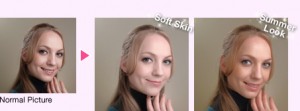Last time I explained ISO and the part that it plays in creating a digital image, and earlier I explained shutter speed. Now it’s time to wrap up the exposure trio with an aperture breakdown.
The aperture is the opening that lets light into the camera. Which then strikes the digital sensor; creating the image. For DSLR users, controlling the aperture is usually done by turning a knob. For those shooting on a point and shoot, you’re out of luck unless it’s a micro four thirds camera. Most traditional point and shoots do all the work for you, calculating the shutter speed, aperture size and the ISO so you don’t have to.
Aperture sizes are measured in f-stops. Lower f-stops (f/1.8) are a larger aperture and higher f-stops (f/22) are smaller. As I said earlier, the aperture is controlling the amount of light coming into the camera. Lower f-stops will allow you to let more light into the camera, allowing for a faster shutter speed and a shallow depth-of-field. Where as a higher f-stop will let less light into the camera, calling for a slower shutter speed to get a properly exposed image and it will give you less depth-of-field.
When should you use a wide aperture? When you’re shooting in low light conditions, or when you want a shallow depth-of-field to help draw attention to your subject. Lenses with a wide aperture are preferred by professionals for their low light performance.

I shot that image at f/2.8. Notice how the background is thrown out of focus? The shallow depth-of-field will help draw attention to your subject.
When should you use a small aperture? When you want to preserve the foreground and background, mainly when you’re shooting a landscape or if it’s extremely bright out.

That was shot at f/8 which helped keep detail in the background.
Just like shutter speed and ISO, think about what and where you’ll be shooting to help you figure out what size of aperture you should be using.



